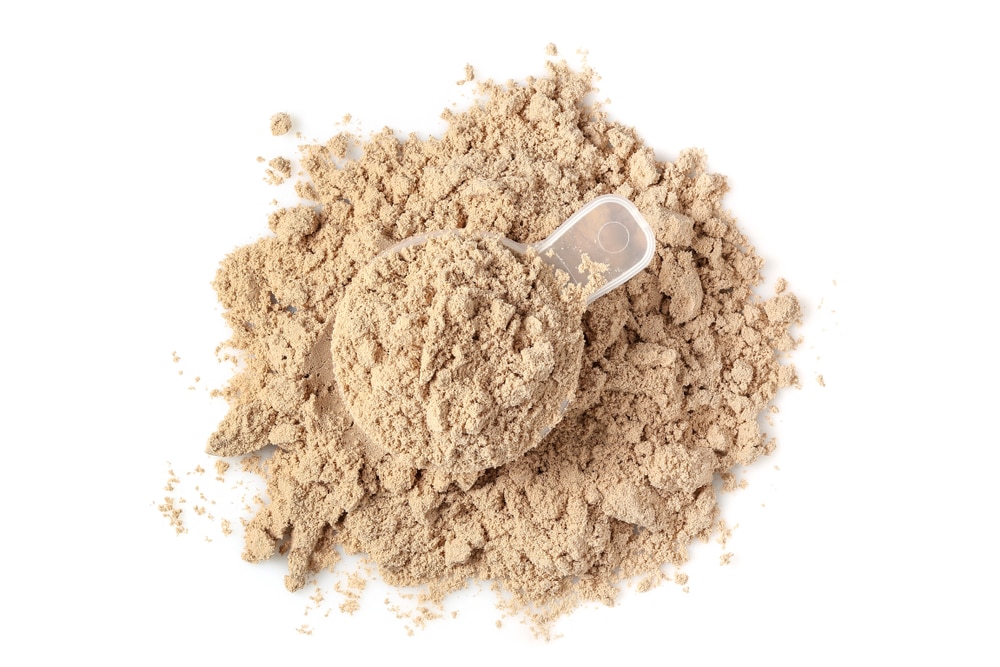
Whey protein is one of the most used ingredients in protein-based baking recipes. It’s actually a great choice for people who want to make post-workout snacks. It is made from milk and is available in two forms, including isolate and concentrate. However, many people think that whey powder is too expensive to be used in baking recipes, which is why we are sharing some substitutes that you can try!
Substitutes For Whey Powder In Baking
- Casein Protein
Casein is a protein that’s found in milk, and one glass of milk provides an abundance of casein. This protein has a slower digesting period, which is why it’s usually consumed after dinner and before sleeping, as it keeps you full for a longer time period. As compared to whey protein, casein protein has a thicker consistency – it will achieve a pudding-like consistency when you mix it with water. However, this protein also has a higher absorption, which is why it improves the end flavor of the baking recipe.
- Egg Protein
In case you are looking for a non-dairy alternative for whey protein, you can simply opt for egg protein. You must know that egg whites are loaded with proteins, which is why it’s recommended that you dehydrate them to create a powder and use it to replace whey protein in baking recipes. On the other hand, if you are concerned about sodium, egg protein has a high sodium level, which results in a concentrated protein. Also, egg protein is readily available.
- Plant-Based Proteins
The plant-based proteins can be taken from various sources, including brown rice, almonds, hemp, and peas. This protein is perfect for people who need a vegan alternative and is readily available in gym stores. In most cases, the plant-based proteins are a mixture of different plants, but pea protein powder is the most common option. However, you need to remember that plant-based proteins have an earthy flavor. On the contrary, if you want a subtle flavor, you can opt for soy protein, and it’s actually very common, so finding it won’t be an issue.
- Almond Flour
This is one of the most versatile and nutritious alternatives of whey protein, which is why it can be used in various baking recipes, including cakes, cookies, and bread. This flour variety will result in a tender and moist texture for baking recipes. The best thing about almond flour is that it has an abundance of vitamin E, fiber, and healthy fats, which boosts the nutritional content of your recipe. However, when you use almond flour as an alternative for whey protein, you might have to add more milk or liquid to the batter as almond flour has a higher absorption rate.
- Chickpea Flour
Another alternative for whey powder is chickpea flour, and as the name suggests, it is made from ground chickpeas. It has a nutty flavor as well as higher fiber and protein content. Keep in mind that chickpea flour has an absorbing nature, which is why you have to add more liquid to make sure the recipe’s texture remains moist and dense. In addition to baking, you can also use chickpea flour in pancakes, smoothies, protein bars, and energy balls.
- Oat Flour
Oat flour is a perfect choice for people who want a nutritious addition to their baking recipes without using whey protein – it’s also pretty versatile. It’s produced by grinding oats into a powdery texture and is readily available in health food stores. The best thing about using oat flour is that it won’t change the consistency or texture of the baking recipe. In addition, you can use it to thicken the sauces and soups but make sure you whisk it in liquid before adding it to the batter to prevent lumps.
- Coconut Flour
This is a gluten-free and healthy choice for baking and is produced from coconut meat’s pulp – it has a higher percentage of healthy fats and fiber. In addition, it’s a great source of protein, which is why it can be used in place of whey powder (yes, you can also choose a 1:1 substitution). However, you have to use more liquid in the recipe to make sure the texture isn’t compromised. In fact, you must sift the coconut flour before you mix it with wet ingredients to prevent lumps and even mixing.